With the MateBook X Pro 2024, Huawei has formalized a new very high-end ultraportable under Windows. This laptop, launched before the arrival of the second generation Core Ultra, aims to combine great power and lightness. If it is not the first to go under the kilo mark, the MateBook X Pro (2024) manages to do so by integrating a powerful Intel Core Ultra 9 processor.
A feat which inevitably raises certain questions about the manufacturer’s ability to control so much power in a thin chassis (13.5 millimeters thick) and featherweight (980 grams).
This test was updated on November 12, 2024.
| Nom | HUAWEI MateBook |
|---|---|
| Dimensions | 310 x 222 x 13,5 mm |
| Weight | 980 g |
| Processor | – Intel Core Ultra 9 185H – Intel Core Ultra 7 155H |
| Graphics Processor | – Intel Arc |
| Storage | – 1 or 2 TB SSD (NVMe PCIe) – Up to 32 GB of RAM |
| Screen | – 14.2-inch IPS – Definition of 3120 x 2080 (264ppi) – Format 3:2 – Color gamut: Adobe RGB, P3, sRGB – Wide viewing angle of 178° – Color depth: 1.07 billion colors Contrast ratio: 1,000,000:1 – 10-point multi-touch screen – Screen-to-body ratio: 93% |
| Camera | – Webcam 1080p |
| Operating system | – Windows 11 Home |
| Keyboard and Touchpad | – Multi-touch touchpad with Free Touch technology – 1.5mm key travel – Backlit chiclet keyboard |
| Battery | – 70Wh lithium-polymer battery – 90W/65W USB-C power adapter |
| Connexion | – WiFi 6 – Bluetooth 5.3 – Fingerprint sensor – 2 x ThunderBolt 4 – 1 x USB-C – 1 x Camera Privacy Switch – USB-C to USB-A adapter |
| Audio | – 6 speaker audio system – 4 microphones |
| Colors | – Blue Morandi |
| Prix | – From 2199.99 euros |
Design: all in finesse and lightness
Huawei has accustomed us to a careful design on this range and its new representative is no exception to this rule. The MateBook X Pro features premium materials and presents neat lines. Thin, it impresses with its lightness, weighing only 980 grams on the scale. The Chinese manufacturer does not hesitate to point out that it is lighter than a 13-inch MacBook Air (1.24 kg). The device can be held easily with one hand, an appreciable comfort for a machine intended for nomadic users. Its textured aluminum chassis comes in a unique color in France: Morandi Blue.
Lightness is the key word of this ultraportable which weighs less than a kilogram on the scale. It is thus part of the trend for ultra-thin and nomadic laptops, also favoring finesse with only 13.5 mm thickness. This compact format is an undeniable asset for transport, allowing the device to be easily slipped into a bag without being cluttered. But this finesse does not come at the expense of comfort of use.
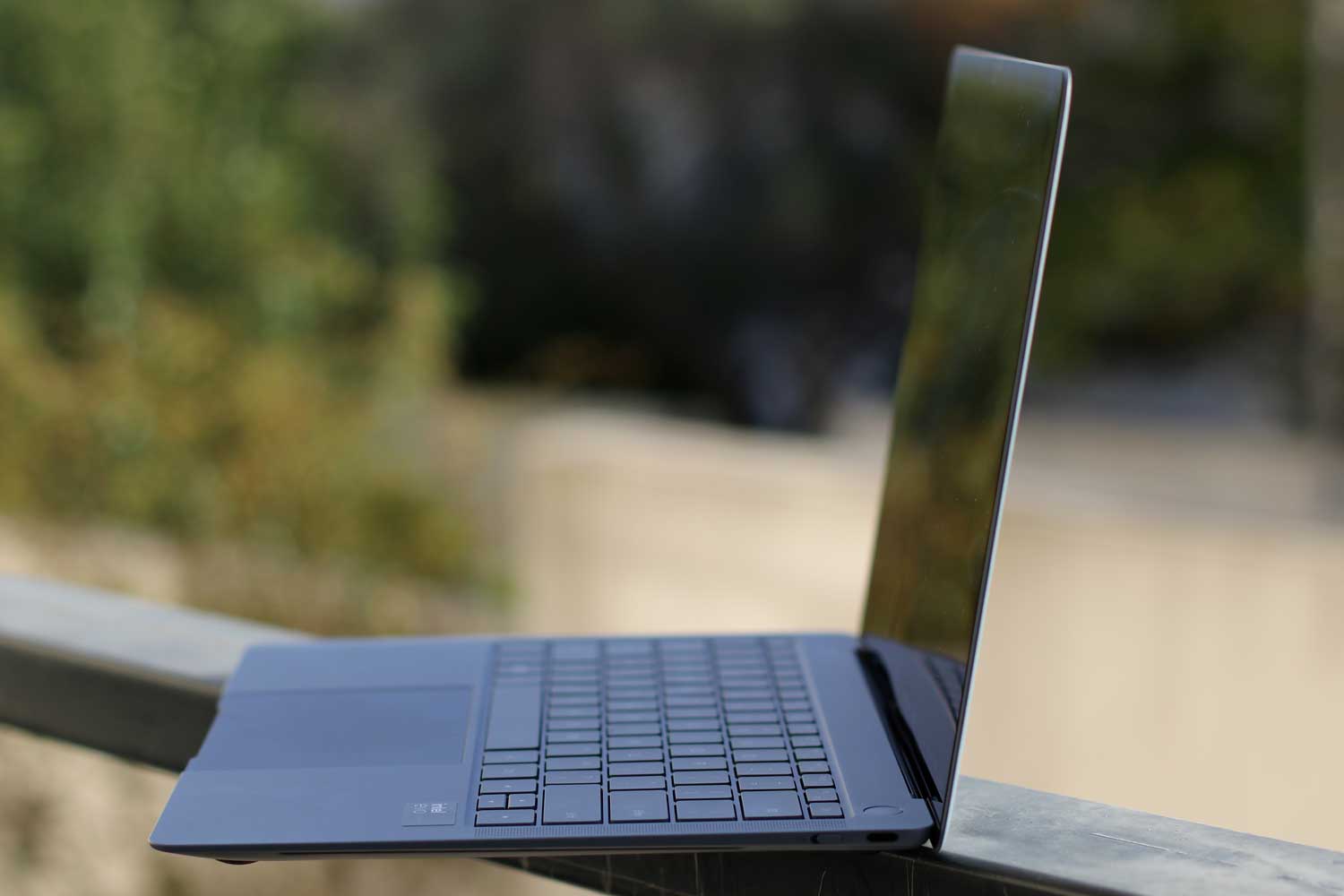
Huawei offers a true ultraportable
The large touchpad, precise and responsive, guarantees smooth and intuitive navigation, whether for web browsing, office work or photo editing. The keyboard, for its part, is comfortable and precise for entering text. It has a short travel and the keys are sufficiently spaced, providing quiet typing except for one element: the space bar. The latter is noisier than the rest and that’s rather a shame.
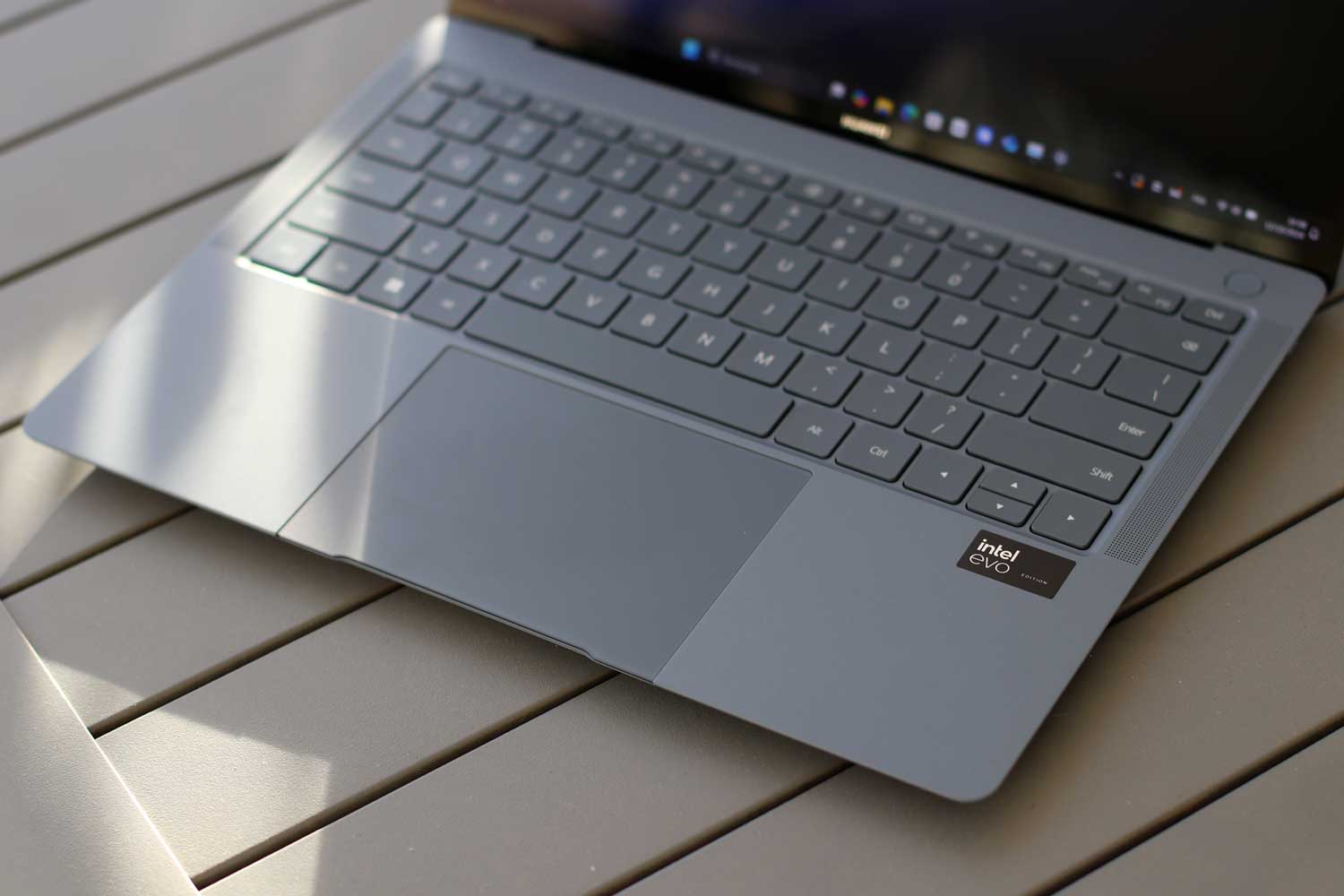
On the connectivity side, the desire to offer a thin and light laptop is not without impact. Huawei simplifies this aspect as much as possible to keep only the essentials, namely two Thunderbolt 4 (USB-C) ports on the left and a USB-C 3.2 port on the right. We took a look at the owner since the MateBook In place of the latter, Huawei offers a camera privacy switch.
Screen: OLED wows us
Huawei abandons LCD to equip its ultraportable with a 14.2-inch OLED touch panel. It displays a beautiful “3.2K” definition of 3,120 x 2,080 pixels and opts for a 3:2 ratio that is always very pleasant for working. The refresh rate increases to 120 Hz to ensure great fluidity in everyday life while the advantages of OLED (infinite contrast, deep blacks, etc.) are visible.
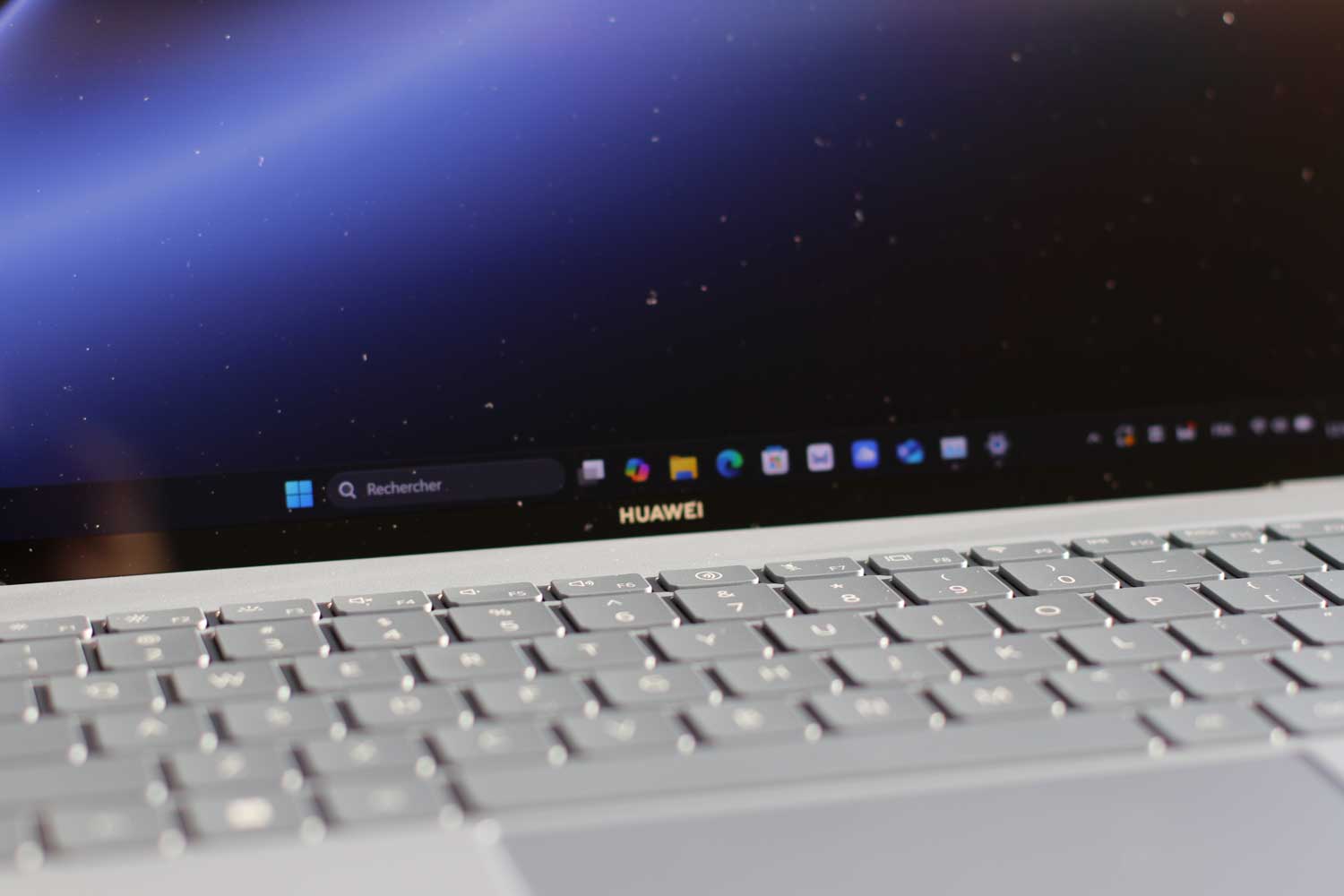
The ultraportable even allows it to integrate a fairly bright OLED panel, which allows outdoor use without problem. No need for a probe to see that the colors are faithful and the color temperature is quite good. Remember that the manufacturer mentions a DeltaE less than 1 and full coverage of the sRGB, DCI-P3 and Adobe RGB and Adobe RGB color gamut. Practical point for creatives, it is possible to modify the colorimetric profile via a dedicated menu.
Huawei’s work should be highlighted and allows the ultraportable to make a notable entry into the world of OLED. We quickly move on to the webcam which offers a classic 1080p display, with more than sufficient rendering for video calls. The camera also allows you to unlock the laptop with Windows Hello.
Performance: the Intel Core Ultra 9 185H is more than ever in the race
After a first preview in June when we received the machine, we got our hands dirty again to update this test. The MateBook X Pro (2024), released in the first half of the year, offered a powerful processor in its small chassis. The Intel Core Ultra 9 185H is part of the first generation Core Ultra family (Meteor Lake), offering 16 cores. The high-end processor is broken down as follows: 6 high-performance cores (Performance-cores), 8 efficient cores (Efficient-cores) and 2 very low-consumption cores for a total of 22 threads.
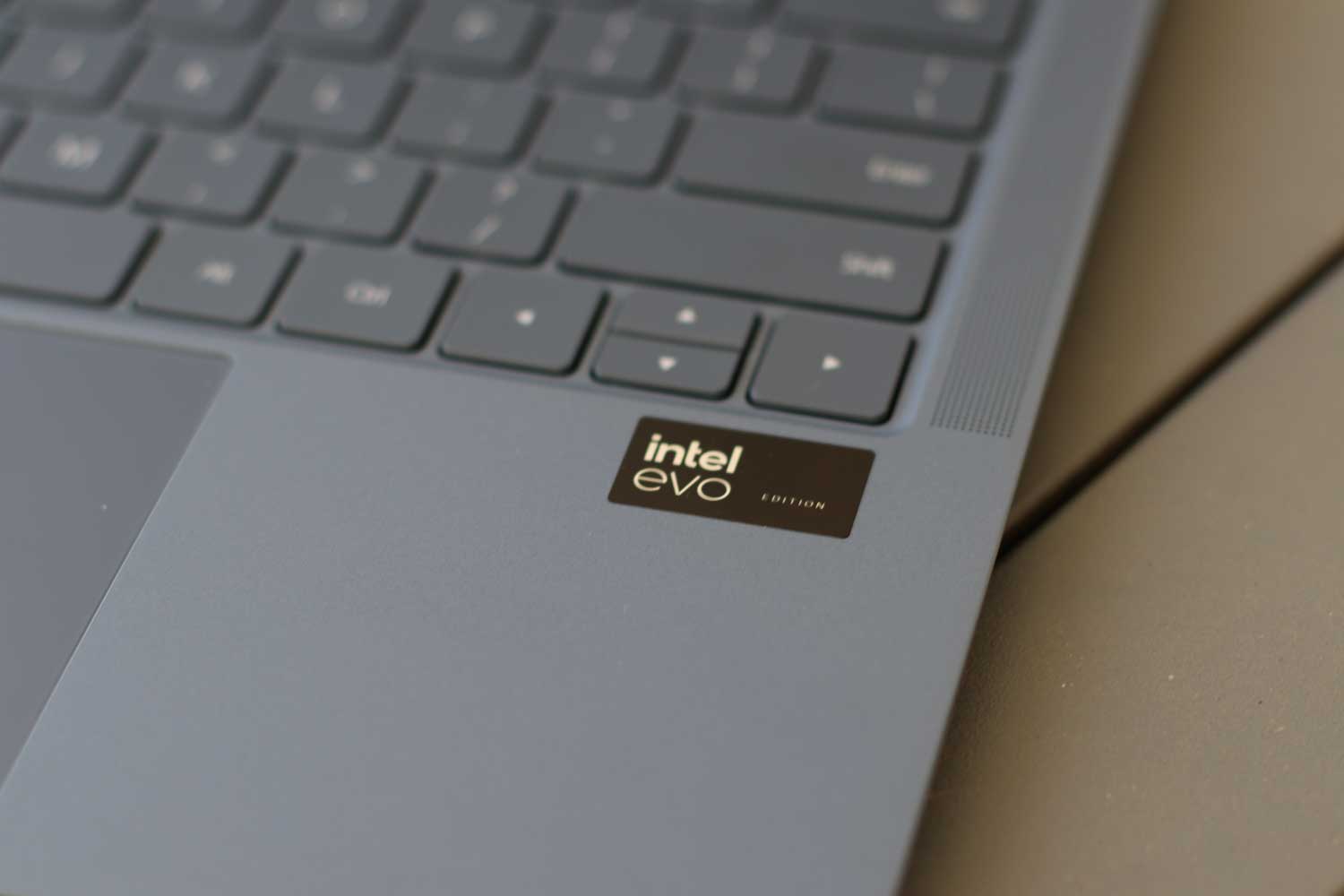
Seeing a Core Ultra 9 185H is a surprise, because the power of such a chip requires special adjustments. Many competitors of the same generation have also preferred to turn to the Core Ultra 7 155H, which is found in the base version of the MateBook X Pro (2024).
The main differences between the two are not in the number of cores, but in frequencies and consumption. The Core Ultra 9 185H climbs up to 5.1 GHz (compared to 4.8 GHz on the Core Ultra 7) and the base frequencies of each type of core are also higher. We have summarized all this for you in a table
Another difference, and not the least, the Intel Core Ultra 9 185H claims a base power of 45 W and a minimum of 35 W. The Core Ultra 7 is limited to a power of 28 W and a minimum thermal envelope of 20 W.
On our machine, we also find 32 GB of LPDDR5x RAM and a 2 TB SSD storage. A powerful configuration on paper, but what is it in reality?
High performance and optimized architecture
Quite logically, the Core Ultra 9 185H is not fully expressed in the MateBook X Pro (2024). Huawei restricts the processor a little to maintain control over its machine, a relevant approach in an ultraportable. The priority goes towards mobility then performance on this type of machine and Huawei has understood this perfectly.
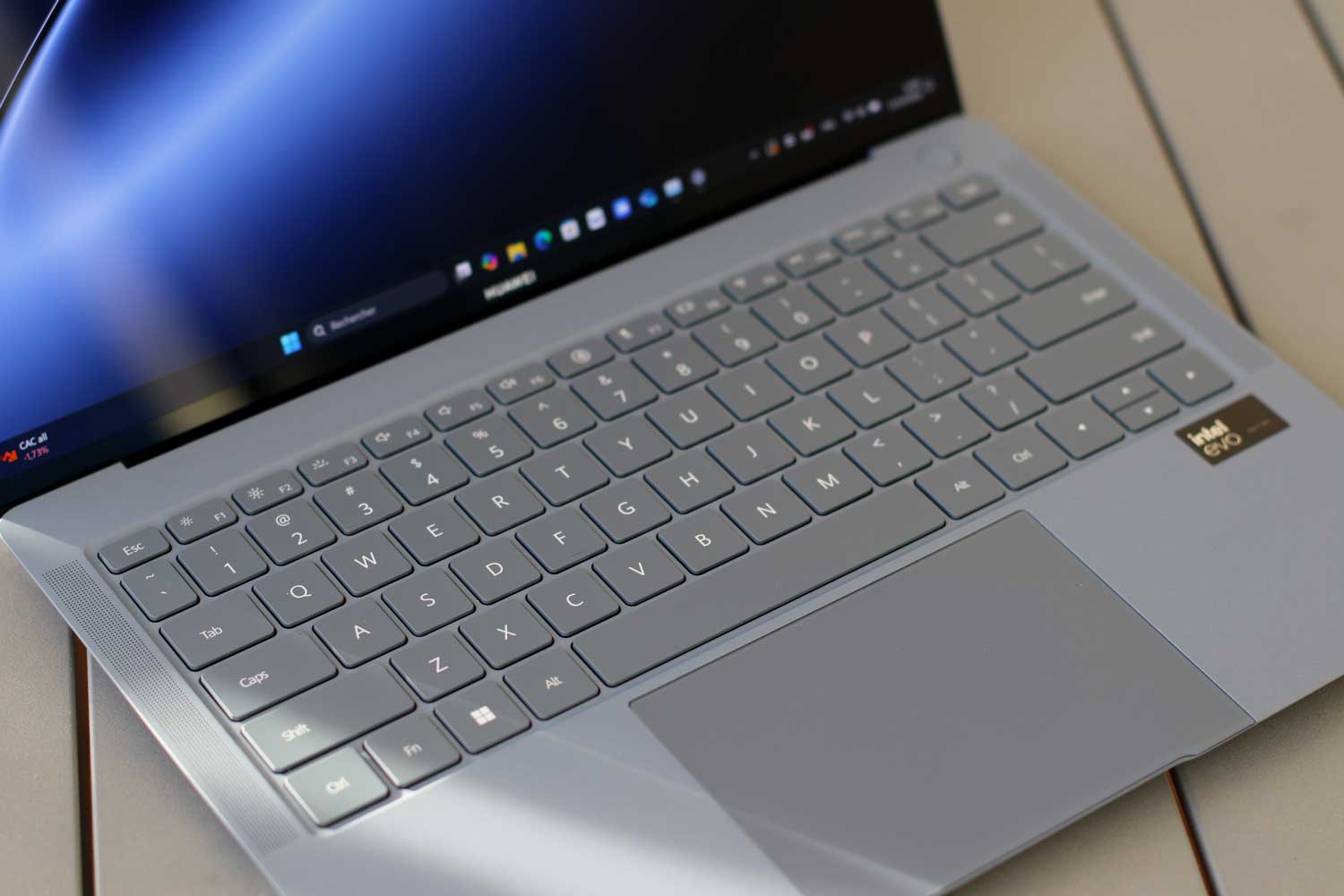
The promise of performance is nevertheless present and we are facing one of the most portable ultraportables of the year. It is largely capable of handling the most demanding uses (casual video editing, professional photo editing, etc.). The machine responds and the fluidity is there, without difficulty or overheating.
| Huawei MateBook | Intel Core i9 185H |
|---|---|
| Cinebench 2024 (single/multi) | 108 / 853 |
| Cinebench R23 (single/multi) | 1 814 / 14 550 |
| Geekbench 6 (single/multi) | 2 506 / 13 943 |
| Geekbench AI (OpenVINO/GPU) | – Single Precision Score : – Half Precision Score : – Quantized Score : |
| Geekbench AI (OpenVINO/NPU) | – Single Precision Score : – Half Precision Score : – Quantized Score : |
| 3DMark Steel Nomad Light | 3 061 |
| 3DMark Time Spy Score | 4 090 |
Here again, the Chinese manufacturer masters its subject and tames this Core Ultra 9 while keeping its MateBook X Pro silent. You have to push it to its limits to hear the fans, which become audible without being annoying. The icing on the cake is that the heat is also very well contained by the chassis.
Finally, the SSD offers speeds of 5.2 GB/s read and 4.9 GB/s write. Good performance, more than sufficient for the majority of uses.
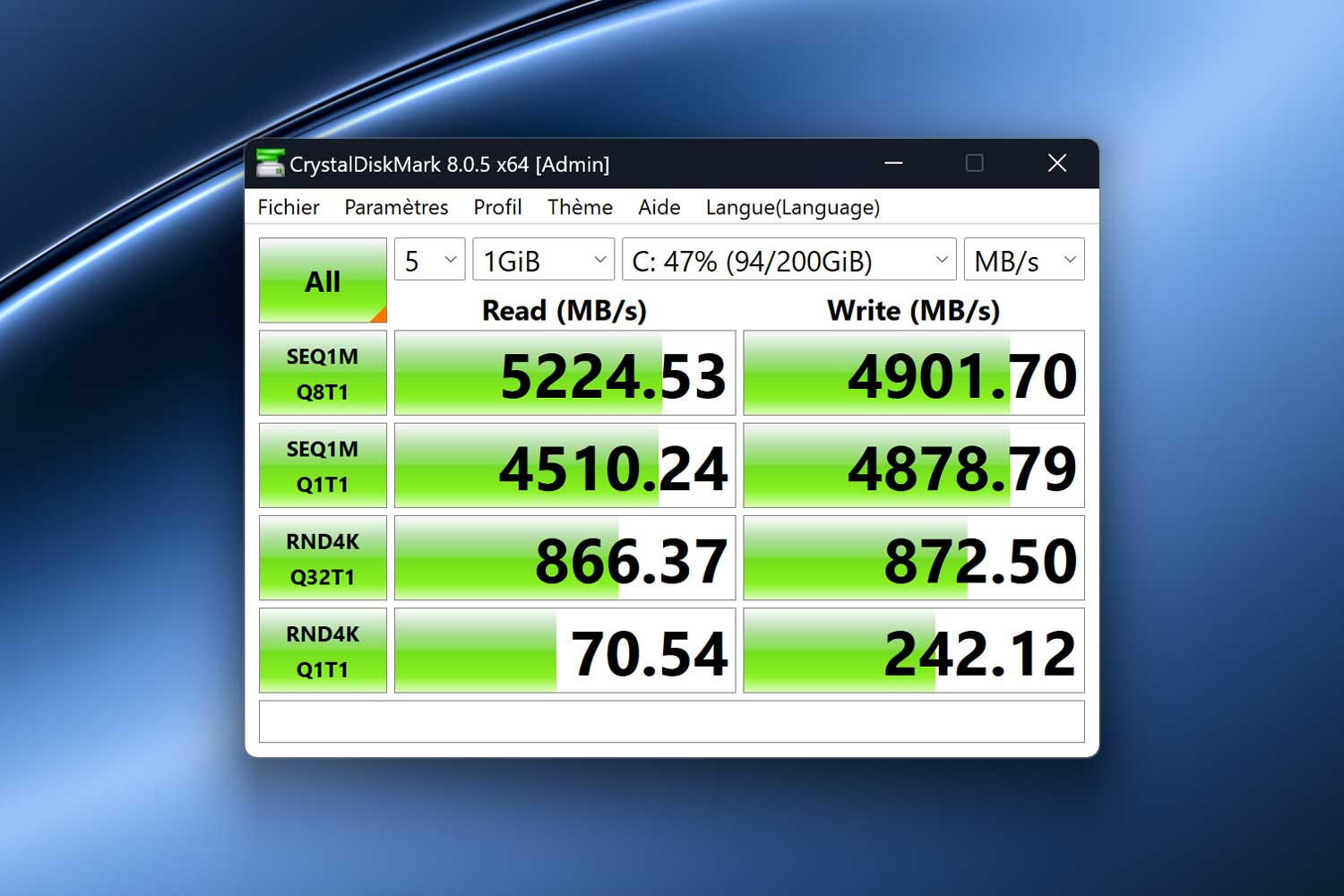
And the software?
The whole thing obviously runs under Windows 11 and unlike Huawei smartphones, there are no limitations with Microsoft’s operating system. The Chinese giant even offers some “in-house” tools, such as PC manager and the control panel. Some functions are a bit duplicative of what Windows already offers, but the proprietary tools are sufficiently relevant to be of real interest.
Autonomy: the MateBook X Pro suffers a little
Huawei offers a 70 Wh battery in its MateBook use), which is enough to last a good day of work without having to focus on the battery percentage.
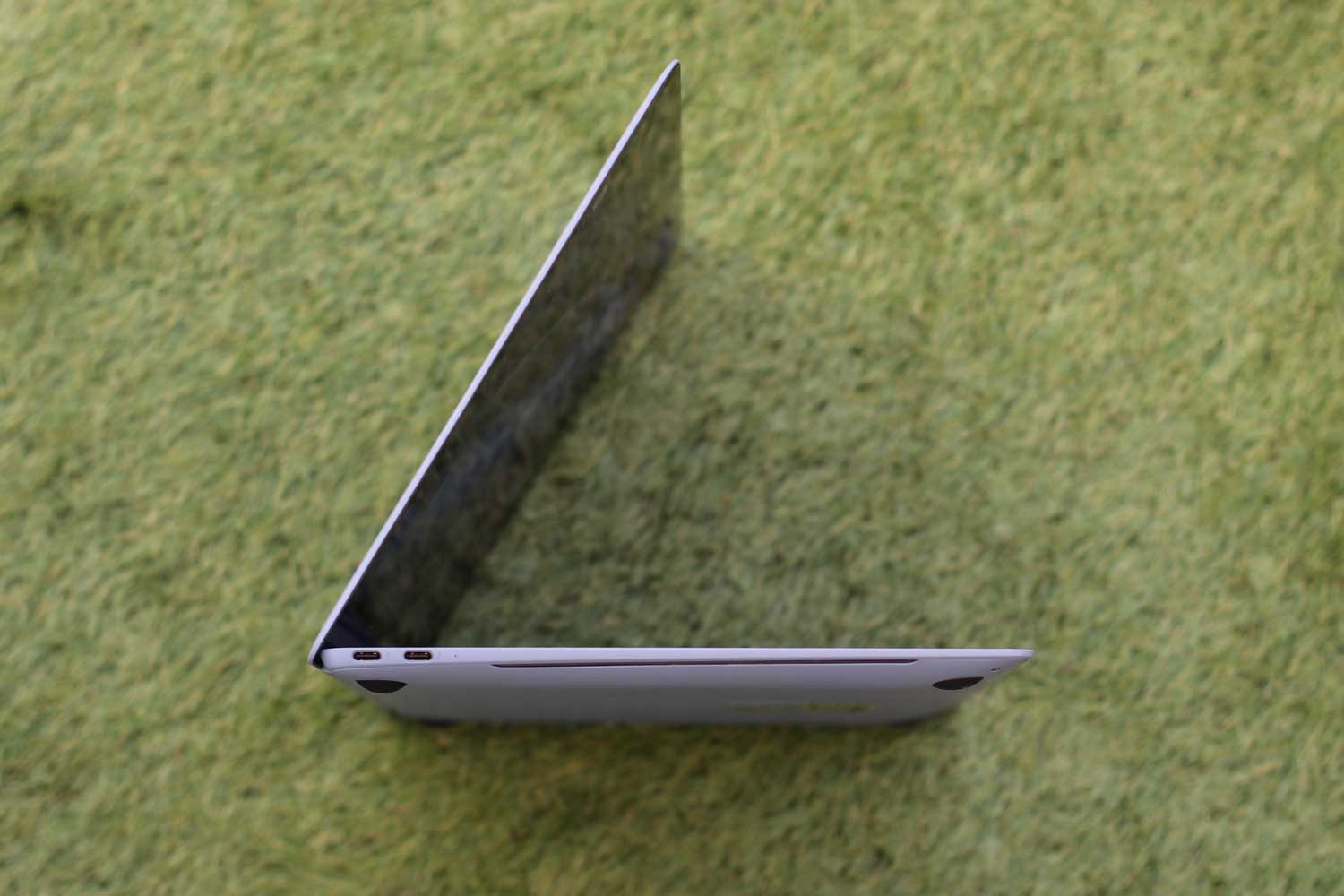
At the time of the machine’s release, this autonomy was in the high average range for a 2024 laptop PC running Windows. The ARM threat was already showing its advantage in the exercise, offering around 15 hours of endurance. At the end of the year, the MateBook X Pro suffers more in comparison following the release of new Intel or Apple Silicon processors.
As for recharging, it is done via USB-C and it takes a little over 1h30 to refuel. A short quick charge (SuperCharge Turbo) of around 10 minutes allows you to regain around 2 hours of endurance.
Price and availability
Huawei launched the MateBook an Intel Core Ultra 9-185H, 32 GB of RAM and 2 TB of SSD storage, for a price of 2,499.99 euros.
These expensive prices are in line with Huawei’s promise and the technical characteristics of the machine. However, it places the MateBook X Pro (2024) in a situation where the competition is strong and varied. Gaming ultraportables are entering the same price segment, offering even more performance in much more raw and imposing formats.
The other major competitor is none other than Apple with the MacBook Air and MacBook Pro.
Source: www.journaldugeek.com






